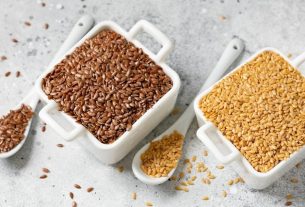The low-fiber, low-residue diet is a type of diet that includes the consumption of low-fiber foods, such as white rice, applesauce, and skinless boiled potatoes, for example. The aim of this diet is to facilitate digestion, decrease the volume and frequency of bowel movements, limit stimulation of the gastrointestinal tract and improve food absorption.
This diet is recommended to alleviate gastrointestinal symptoms, such as diarrhea or abdominal pain, to control attacks of Crohn’s disease, ulcerative colitis or irritable bowel syndrome, in the preoperative period or to prepare for exams such as colonoscopy, for example.
The low-fiber diet is often used momentarily until gastrointestinal symptoms pass. However, it should be done under the guidance of a gastroenterologist or nutritionist after a complete assessment and creation of an individualized eating plan to obtain the necessary nutrients from the diet and avoid nutritional deficiencies.

When is it indicated
A low fiber diet is recommended in the following situations:
- Diarrhea or abdominal pain;
- Difficulty digesting food;
- Times of flare-ups of Crohn’s disease, ulcerative colitis or irritable bowel syndrome;
- Narrowing or partial obstruction of the intestines;
- Before or after intestinal surgeries;
- Preparation for exams, such as colonoscopy.
The time to follow a low-fiber diet should be guided by the gastroenterologist or nutritionist according to the condition being treated.
If you need to follow a low fiber diet, make an appointment with a nutritionist in the region closest to you:
Taking care of your health has never been easier!
What to eat on a low-fiber, low-residue diet
Some of the foods poorest in fiber and residues that can be included in this type of diet are:
- Cookies, such as cream crackers or rice crackers;
- Meats, such as fish, chicken, turkey or tofu;
- Boiled or scrambled eggs;
- Low-fat white cheeses, such as cottage cheese;
- Lactose-free milk and yogurt;
- Vegetable drinks, such as coconut, almond or rice milk;
- Carbohydrates, such as white bread, white pasta, well-cooked white rice, tapioca, wheat or corn flour tortilla;
- Vegetables cooked without skin and seeds, such as pumpkin, carrots and zucchini;
- Boiled and peeled tubers, such as potatoes, yams and okra;
- Strained, unsweetened fruit juices;
- Natural fruit sweets and jellies;
- Clear liquids, such as broth, coconut water or rice water;
- Fruits cooked without the peel, such as bananas, pears, peaches or apples.
In addition to giving preference to foods that do not have a lot of fiber, food preparation is another important strategy to reduce the amount of fiber in your diet, cooking and removing the skin from all foods that are consumed.
During this poor diet, it is important to eliminate raw fruits and vegetables, as well as legumes, such as beans or peas, because they are foods with a lot of fiber and stimulate bowel function.
Low fiber diet menu
The following table provides an example of a low-fiber diet menu that should be followed for 2 or 3 days, until the intestine regains its function.
This diet should be followed for a short period of time, mainly to alleviate diarrhea or abdominal pain, and it is important to have guidance from a gastroenterologist or nutritionist, especially when it is necessary to follow a low-fiber diet for more days.
In this way, adequate nutrients will be guaranteed in the diet according to individual needs, so as not to generate nutritional deficiencies.
What to avoid
During the low-fiber diet, you should avoid foods rich in fiber, such as wheat bran, rolled oats, bread, whole-grain pasta or rice, granola, beans, peas, lentils, nuts, or fruits or vegetables with seeds and skins. , for example.
This is because fiber, especially insoluble fiber, is difficult to digest, as well as accelerating intestinal transit and increasing the volume of feces. See all the fiber-rich foods that should be avoided.
Bibliography
- VANHAUERT, E.; et al. Low-residue and low-fiber diets in gastrointestinal disease management. Adv Nutr. 6. 6; 820-7, 2015
- FOO, WL; et al. A Short-Term Low-Fiber Diet Reduces Body Mass in Healthy Young Men: Implications for Weight-Sensitive Sports. Int J Sport Nutr Exerc Metab. 32. 4; 256-264, 2022
- SORATHIA AZ, SORATHIA, S. J. IN: STATPEARLS (INTERNET). TREASURE ISLAND (FL): STATPEARLS PUBLISHING. Low Residue Diet. 2023. Available at: <https://www.ncbi.nlm.nih.gov/books/NBK557693/>. Accessed on February 26, 2024
- AMERICAN CANCER SOCIETY. Low-Fiber Foods. 2020. Disponível em: <https://www.cancer.org/cancer/survivorship/coping/nutrition/low-fiber-foods.html>. Acesso em 26 fev 2024

Sign up for our newsletter and stay up to date with exclusive news
that can transform your routine!
Warning: Undefined array key "title" in /home/storelat/public_html/wp-content/plugins/link-whisper-premium/templates/frontend/related-posts.php on line 12
Warning: Undefined array key "title_tag" in /home/storelat/public_html/wp-content/plugins/link-whisper-premium/templates/frontend/related-posts.php on line 13




